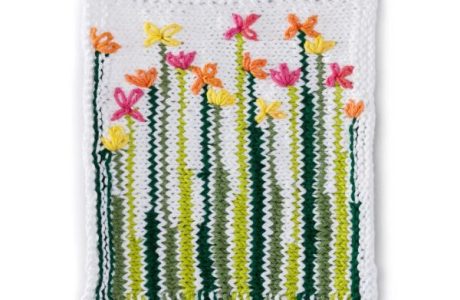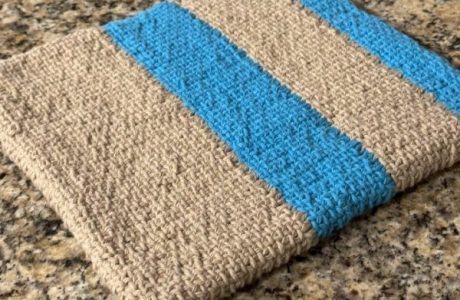 I learned to knit when I was a kid, and I learned the English/throwing/yarn-in-the-right-hand method. When I picked up knitting again after college I re-learned in the same way. But since helping other people learn to knit and enjoy their knitting has been a part of my career (not to mention having a strongly left-handed daughter) I know how to knit continental/picking/yarn-in-the-left-hand as well.
I learned to knit when I was a kid, and I learned the English/throwing/yarn-in-the-right-hand method. When I picked up knitting again after college I re-learned in the same way. But since helping other people learn to knit and enjoy their knitting has been a part of my career (not to mention having a strongly left-handed daughter) I know how to knit continental/picking/yarn-in-the-left-hand as well.
I still default to English knitting. Though a lot of people say that continental is faster, I actually won a speed knitting contest using English style. Speed isn’t always the goal, but I have spent time through the years working on my form to make it easier on my body.
If you feel those aches and pains in your hands, arms, neck and back after a long knitting session, you probably need to pay more attention to the ergonomics of your knitting style.
It’s not necessarily an easy thing to evaluate yourself, but help is here! Carson Demers, who is both a knitter and a physical therapist (and the author of a book on knitting ergonomics, called Knitting Comfortably) has started a regular series over at Modern Daily Knitting to help us all do better with our knitting.
The first post talks about why we tend to have problems with our knitting form in the first place. He says because so many people are learning in ways removed from the tradition of handwork as physical labor, we aren’t starting out with the best, most efficient and comfortable form, which causes pain and strain.
There are also illustrations and some descriptions of the optimal positions for either style of knitting — since it doesn’t really matter what method you use as long as your form is good — which can give you a start if you’re looking at your own knitting style and ways you might work to make it more comfortable.
Have you ever worked on your knitting form to make it more comfortable or faster? I’d love to hear about it!
[Photo: Carson Demers via Modern Daily Knitting.]
How to Sit, Stand and Knit to Relieve Pain
As any dedicated knitter knows, spending hours working on a project can take a toll on your body. From back pain to wrist strain, knitting can cause a variety of discomforts. But with a few simple tips on sitting, standing, and knitting, you can relieve pain and make your knitting sessions more comfortable. Check out this article to learn how to knit without the pain!
Paying Attention to the Ergonomics of Knitting
Knitting is a relaxing and satisfying hobby, but it can also be hard on your body if you’re not careful. That’s why paying attention to the ergonomics of knitting is so important. By choosing the right tools, setting up your workspace properly, and taking regular breaks, you can avoid pain and discomfort while enjoying your craft. Read on for tips on how to make your knitting practice more ergonomic.
Stretches to Relieve Knitting Pain and Stiffness
If you’re an avid knitter, you know that long hours spent working on a project can cause pain and stiffness in your hands, wrists, and back. But did you know that stretching can help alleviate these discomforts? In this article, you’ll learn a few simple stretches you can do before, during, and after knitting to keep your body healthy and pain-free. Give them a try and feel the difference!




